Thamnophilidae
Typical Antbirds
John Harshman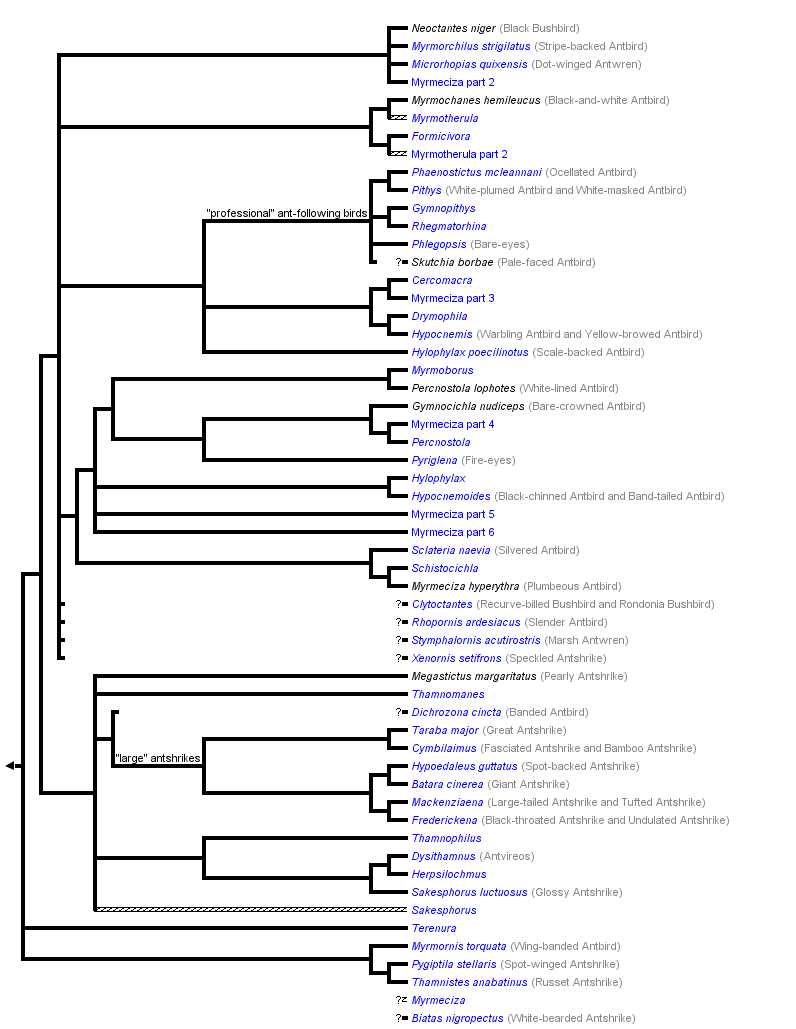


This tree diagram shows the relationships between several groups of organisms.
The root of the current tree connects the organisms featured in this tree to their containing group and the rest of the Tree of Life. The basal branching point in the tree represents the ancestor of the other groups in the tree. This ancestor diversified over time into several descendent subgroups, which are represented as internal nodes and terminal taxa to the right.

You can click on the root to travel down the Tree of Life all the way to the root of all Life, and you can click on the names of descendent subgroups to travel up the Tree of Life all the way to individual species.
For more information on ToL tree formatting, please see Interpreting the Tree or Classification. To learn more about phylogenetic trees, please visit our Phylogenetic Biology pages.
close boxRelationships after Irestedt et al. (2004) and Brumfield et al. (2007). The placement of Dichrozona cincta is uncertain because of incongruent signals from different genes and the potential of long-branch artefacts in the combined analysis. Other taxa shown as incertae sedis  were not included in either analysis.
were not included in either analysis.
Discussion of Phylogenetic Relationships
In contrast to many other suboscine families, Thamnophilidae appears to be monophyletic. However, this cannot be said for many of the genera within it. A good rule of thumb is that the more species a genus has, the more likely it is to be found not to be monophyletic. The first and third largest genera in this family, Myrmotherula and Myrmeciza are both highly polyphyletic, being divided into at least 2 and 7(!) separate pieces, respectively. The second largest genus, Thamnophilus, still has not had enough species sampled for a proper test of monophyly. Other polyphyletic genera on this tree include Sakesphorus and Percnostola, and other genera may prove not to be monophyletic with further sampling. The genus name always goes with the type species, and other parts of the polyphyletic genera will need other names eventually. Myrmeciza may in fact end up containing the type species and no other.
References
Bates JM, Hackett SJ, Goerck JM. 1999. High levels of mitochondrial DNA differentiation in two lineages of antbirds Drymophila and Hypocnemis. Auk 116:1093-1106.
Brumfield, R. T., J. G. Tello, Z. A. Cheviron, M. D. Carling, N. Crochet, and K. V. Rosenberg. 2007. Phylogenetic conservatism and antiquity of a tropical specialization: Army-ant-following in the typical antbirds (Thamnophilidae). Molecular Phylogenetics and Evolution 45(1):1-13.
Gill, F. and M. Wright. 2006. Birds of the World: Recommended English Names. Princeton NJ: Princeton University Press.
Hackett, S. J. and K. V. Rosenberg. 1990. Comparison of phenotypic and genetic differentiation in South American antwrens (Formicariidae). Auk 107:473-489.
Irestedt, M., J. Fjelds?, J. A. A. Nylander, and P. G. P. Ericson. 2004. Phylogenetic relationships of typical antbirds (Thamnophilidae) and test of incongruence based on Bayes factors. BMC Evolutionary Biology 4:23.
Isler, M. L., P. R. Isler, and B. M. Whitney. 1998. Use of vocalizations to establish species limits in antbirds (Passeriformes: Thamnophilidae). Auk 115:577-590.
Isler, M. L., P. R. Isler, and B. M. Whitney. 1999. Species limits in antbirds (Passeriformes: Thamnophilidae): The Myrmotherula complex.
Auk 116:83-96.
Isler, P. R. and B. M. Whitney. 2002. Songs of the Antbirds. Macaulay Library of Natural Sounds, Cornell Laboratory of Ornithology. Ithaca, NY.
Ridgely, R. S. and G. Tudor. 1994. The Birds of South America. Volume 2. The Suboscine Passerines. University of Texas, Austin.
Skutch, A. F. 1996. Antbirds and Ovenbirds. University of Texas Press, Austin, TX.
Zimmer, K.J. and K.J. Isler. 2003. Family Thamnophilidae (typical antibirds). Pages 448?651in Handbook of the Birds of the World. Vol. 8. Broadbills to Tapaculos. J. del Hoyo, A. Elliott, and D. A. Christie, eds. BirdLife International and Lynx Editions, Cambridge, UK and Barcelona.
Title Illustrations

| Scientific Name | Thamnophilus ambiguus |
|---|---|
| Location | Brazil |
| Specimen Condition | Live Specimen |
| Source | Choca-de-sooretama |
| Source Collection | Flickr |
| ToL Image Use |
 This media file is licensed under the Creative Commons Attribution-NonCommercial-NoDerivs License - Version 2.0. This media file is licensed under the Creative Commons Attribution-NonCommercial-NoDerivs License - Version 2.0.
|
| Copyright | © 2006 Antonio CBC Lopes |
| Scientific Name | Cymbilaimus lineatus |
|---|---|
| Location | Panama |
| Specimen Condition | Live Specimen |
| Source | Fasciated Antshrike Wing |
| Source Collection | Flickr |
| ToL Image Use |
 This media file is licensed under the Creative Commons Attribution-NonCommercial-ShareAlike License - Version 2.0. This media file is licensed under the Creative Commons Attribution-NonCommercial-ShareAlike License - Version 2.0.
|
| Copyright | © 2006 joule_e |
About This Page
Correspondence regarding this page should be directed to John Harshman at
Page copyright © 2007
All Rights Reserved.
- First online 05 December 2007
Citing this page:
Harshman, John. 2007. Thamnophilidae. Typical Antbirds. Version 05 December 2007 (under construction). http://tolweb.org/Thamnophilidae/67983/2007.12.05 in The Tree of Life Web Project, http://tolweb.org/




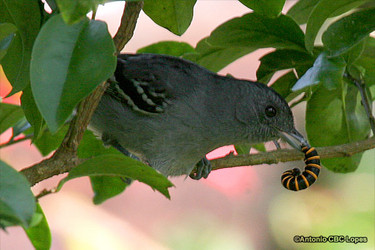
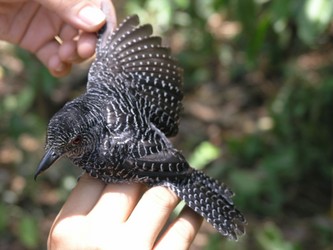
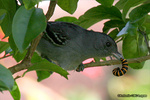
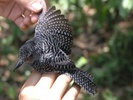


 Go to quick links
Go to quick search
Go to navigation for this section of the ToL site
Go to detailed links for the ToL site
Go to quick links
Go to quick search
Go to navigation for this section of the ToL site
Go to detailed links for the ToL site